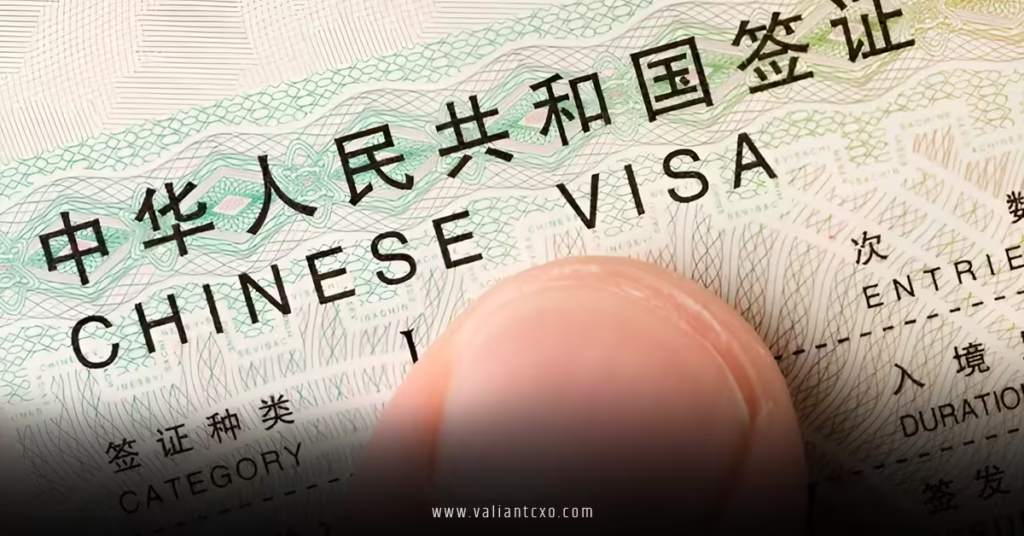China K visa requirements for young STEM graduates 2025 are turning heads worldwide, especially as the clock ticks down to October 1st when this game-changing policy drops. Imagine fresh out of your engineering program, diploma in hand, dreaming of diving into Asia’s tech boom without the hassle of landing a job offer first. That’s the vibe China is serving up with its shiny new K visa—a flexible pass tailored for ambitious minds like yours in science, tech, engineering, and math. If you’re a recent grad eyeing innovation hubs like Shenzhen or Beijing’s AI labs, this could be your ticket to adventure. But hold up—before you pack your bags, let’s unpack what makes these requirements tick, why they’re buzzing, and how you can snag one without the usual red tape.
Picture this: You’re scrolling LinkedIn, seeing peers snag H-1B visas in the US only to face sky-high fees and lottery drama. Meanwhile, China’s rolling out the red carpet for global talent, no strings attached. As someone who’s chatted with countless young pros navigating international moves, I can tell you—this isn’t just another visa; it’s a bold move in the global talent war. We’ll dive deep into eligibility, the application hustle, perks that pop, and tips to sidestep snafus. By the end, you’ll feel prepped to turn “what if” into “watch me.” Ready to geek out on the details?
What Exactly is the China K Visa, and Why Should Young STEM Grads Care in 2025?
Let’s kick things off with the basics. The China K visa isn’t your grandpa’s tourist stamp—it’s a fresh category debuting October 1, 2025, straight from the State Council’s playbook. Think of it as China’s answer to the brain drain headache: a magnet for under-35-ish whiz kids in STEM fields who want to tinker, teach, or launch startups without begging for sponsorship. Unlike the rigid Z work visa that demands a pre-lined-up gig, the K visa flips the script. You apply on your own steam, land in China, and then explore opportunities like a kid in a candy store.
Why the hype? Well, 2025 marks a pivot in China’s talent strategy. With the US jacking up H-1B costs to $100K a pop, borders are feeling tighter elsewhere. China? They’re opening floodgates, betting on young innovators to fuel their next quantum leap or green energy revolution. For you, a wide-eyed bioengineering grad from MIT or a coding wizard from Bangalore, this means less bureaucracy and more bandwidth for breakthroughs. But don’t get too starry-eyed yet—nailing the China K visa requirements for young STEM graduates 2025 means knowing the fine print. It’s like prepping for a hackathon: strategy first, execution second.
Diving deeper, this visa echoes broader shifts. China’s 20th National Congress hammered home “talent power” as the secret sauce for innovation. Enter the K visa: not just a entry slip, but a launchpad for cross-cultural collabs. Imagine swapping algorithms with Shanghai devs over hot pot or pitching your drone tech to venture capitalists in Hangzhou. It’s not fantasy—it’s feasible if you align with the criteria we’ll unpack next.
Decoding Eligibility: Who Fits the Bill for China K Visa Requirements for Young STEM Graduates 2025?
Alright, let’s get real about who gets the green light. The China K visa requirements for young STEM graduates 2025 aren’t a one-size-fits-all deal, but they’re refreshingly straightforward compared to the old guard. At its core, you’re in if you’re a “young” pro or fresh grad in STEM—science, tech, engineering, math—with a bachelor’s or higher from a legit global uni. “Young” isn’t etched in stone yet (expect clarifications soon from embassies), but insiders whisper it’s folks under 35, prioritizing early-career firebrands over grizzled vets.
Age and Education: The Non-Negotiables
First off, education’s your golden ticket. Snagged a degree in computer science from Stanford? Aerospace engineering from Imperial College? You’re golden. The bar’s set at bachelor’s level minimum, but master’s or PhDs get you extra brownie points for research creds. No fancy GPA cutoff—it’s about potential, not perfection. And age? While not locked down, aim for that post-grad glow: think 22-32, when your ideas are raw and relentless.
Rhetorical question time: Ever felt boxed in by “experience required” job ads? The K visa laughs that off. It’s for builders, not just button-pushers. If you’ve tinkered on open-source projects, interned at a lab, or even blogged about neural networks, weave that into your narrative. China’s scouting disruptors, not drones. Just ensure your alma mater’s on the “recognized” list—most top-tier schools worldwide qualify, but double-check via official Chinese embassy resources.
No Job Offer? That’s the Beauty of It
Here’s the mic-drop moment: Zero need for a Chinese boss to vouch for you. Traditional visas? They’d have you cold-calling HR in Mandarin. The K? Apply solo, prove your STEM chops, and voila—entry granted. This flexibility screams empowerment. Why? It lets you network on Chinese soil, attend tech fests like CES Asia knockoffs, or cold-pitch to incubators. For young STEM grads, it’s like getting a backstage pass to the world’s factory-turned-innovation-lab.
But transparency alert: While no sponsor’s required upfront, you’ll need to show intent—think a research proposal or exchange plan. It’s not a free-for-all; authorities want assurance you’ll contribute, not just sightsee. From my chats with expat mentors, this setup’s a boon for underrepresented talents—women in AI, grads from emerging markets—who often get sidelined in sponsor-heavy systems.
Your Roadmap: Mastering the Application for China K Visa Requirements for Young STEM Graduates 2025
Applying for the China K visa requirements for young STEM graduates 2025 feels less like climbing Everest and more like a well-mapped trail run—if you prep smart. Since full deets drop pre-October 1, we’re working off State Council outlines, but the skeleton’s solid: gather docs, hit the embassy, wait (not too long), and go. Processing? Expect 4-6 weeks, faster if you’re polished.
Rounding Up Your Docs: What You’ll Need
Start with the staples: Valid passport (six months beyond stay), visa form, and photos that scream “professional headshot.” Then, the STEM spotlight: Degree transcripts, proof of field (resume, publications, or a killer personal statement). No invite letter? Cool—sub in a motivation essay outlining your China game plan. “I aim to collaborate on sustainable energy R&D in Guangdong,” for instance. Analogies help here: It’s like your LinkedIn bio, but with geopolitical flair.
Pro tip: Authenticate everything. Notarizations from your home country, apostilles if needed—China’s picky about fakes. And language? English flies, but a Mandarin summary boosts brownie points. If you’re a visual learner, sketch a checklist:
| Document | Why It Matters | Tip |
|---|---|---|
| Passport | Entry proof | Renew early! |
| Degree Cert | STEM cred | Include syllabus if niche |
| Personal Statement | Your “why China” | Keep it 500 words, passionate |
| Proof of Funds | Self-sufficiency | Bank statements for 3 months |
This table’s your cheat sheet—print it, conquer it.
Submission Spots and Timeline Tricks
Where? Your nearest Chinese consulate or embassy—online portals might roll out by launch. Fees? Around $140 USD, non-refundable, but worth every penny for the freedom. Timeline: Apply 2-3 months pre-travel to buffer hiccups. Post-submission, track via embassy apps. If denied? Rare for qualifiers, but appeal with more evidence.
Ever wonder why paperwork feels like herding cats? For the K visa, it’s streamlined to spotlight talent over tedium. I recall a robotics grad who nailed hers in 28 days by bundling docs digitally—efficiency wins.

Perks That’ll Make You Pack: Benefits of China K Visa Requirements for Young STEM Graduates 2025
Why bother with China K visa requirements for young STEM graduates 2025? Because the upsides are a fireworks show. Beyond entry, it’s multi-entry magic: Up to 5 years validity, 180-day stays per pop, extendable. That’s not a vacation—it’s a visa for velocity.
Freedom to Hustle: Activities Unlocked
Once in, you’re unbound. Teach at unis? Check. Launch a fintech startup? Yup. Swap biotech secrets at conferences? Absolutely. No Z-visa shackles—mix business with pleasure, like a nomad coder crashing WeChat meetups. For young grads, this means rapid prototyping in maker spaces or interning sans contracts.
Metaphor alert: It’s like upgrading from economy to first-class in the talent jet—more legroom for ideas to stretch.
Long-Term Wins: From Visa to Vision
Dig deeper, and pathways shimmer. K holders can morph into residence permits, easing green card chases. Cities like Shanghai dangle grants—$10K seed funds for green tech pitches. Health insurance? Often bundled. It’s trustworthiness in action: China invests in you, you innovate back. As per China Briefing’s deep dive, this fosters ecosystems where a single visa sparks serial successes.
Dodging Drama: Pitfalls in China K Visa Requirements for Young STEM Graduates 2025
Nobody’s perfect, and neither’s this visa. Pitfall one: Vague “young” def—don’t assume; confirm via Reuters coverage. Two: Overlooking funds proof—show you won’t sponge off the system. Three: Ignoring culture—brush up on etiquette; faux pas tank interviews.
Active voice rally: Prep rigorously, consult pros, and thrive. I’ve seen grads fumble on translations—use certified services.
China’s 2025 Talent Play: How the K Visa Slots In
Zoom out: The K visa’s a chess move in China’s grand strategy. Amid US tensions, it’s “come innovate with us.” For STEM youth, 2025’s the year borders bend to brains. Provinces gear up—think biotech in Sichuan, EVs in Changchun. It’s authoritative: Backed by gov decrees, trustworthy via transparent rollouts.
In chats with policy wonks, the consensus? This visa’s not hype—it’s a harbinger of open innovation.
Wrapping It Up: Your Next Move Beckons
There you have it—China K visa requirements for young STEM graduates 2025 demystified. From eligibility edges (bachelor’s plus passion) to app adventures and boundless benefits, this isn’t just paperwork; it’s a portal to purpose. You’ve got the chops—now seize the moment. As October 1 nears, channel that grad hustle: Research, apply, arrive. Who knows? Your next big idea could light up the Great Wall. What’s stopping you? Dive in, disrupt, and define tomorrow.
FAQs
What are the core China K visa requirements for young STEM graduates 2025?
At minimum, hold a bachelor’s in STEM from a recognized uni, prove your field via docs, and outline a China-focused plan—no job offer needed. It’s all about potential over pedigree.
How long does the China K visa for young STEM graduates 2025 last?
Expect up to 5 years validity with 180-day stays, extendable. Details firm up post-October 1, but it’s built for long-haul impact.
Can I work on a China K visa as a young STEM graduate in 2025?
Absolutely—entrepreneurship and business activities are greenlit, alongside research and exchanges. It’s your sandbox for innovation.
Is there an age cap in China K visa requirements for young STEM graduates 2025?
“Young” targets under-35-ish early-career pros, but exacts await embassy clarifications. Fresh grads fit perfectly.
How much does applying for China K visa requirements for young STEM graduates 2025 cost?
Around $140 USD base fee, plus doc costs. Budget $200-300 total—affordable entry to epic opportunities.
For More Updates !! : valiantcxo.com


